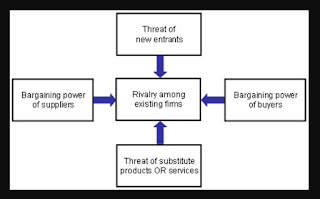Every once in a while, I have one of those annoying dreams in which either I am lost or I have lost something (coat, phone, keys, wallet, luggage, passport, password, tickets, directions, dog, etc.) and no matter what I do in the dream the situation keeps getting worse. The dreams are unsettling enough, but according to DreamStop they also might signify I have lost out on one or more real opportunities during my waking life. Ouch! Then a few nights ago I dreamt I was in a hotel room trying to pack my bags to come home but I couldn’t fit everything into my luggage because I kept finding things in the room that I had lost in prior dreams. I need to visit that hotel.
Back in 1919, when Walter Chrysler left General Motors, he was involved in a bitter disagreement with GM founder Billy Durant over Durant’s operating priorities, his management style, and what Chrysler viewed as his refusal to recognize untapped opportunities to control costs and improve efficiency. Chrysler was later quoted as saying:
“The reason so many people never get anywhere in life is because when opportunity knocks, they are out in the backyard looking for four-leaf clovers.”
I thought of Chrysler’s four-leaf clovers recently after speaking with an insurance executive friend about his claims operation. He told me he was under pressure to demonstrate improvement in his results, and he had concluded that some sort of clever, disruptive solution might be just what he needed to relieve the pressure and demonstrate his commitment to innovation. He didn’t have anything particular in mind, although he had read about insurtech, and artificial intelligence, and digitalization and they all sounded promising to him. What did I think?
Not all of us perceive opportunities in the same way, of course, and I'm grateful for that since much of my work the past few years has involved helping claims executives recognize problems and identify opportunities. Sometimes it's useful for an executive to kick things around with someone who might bring a different perspective. Not always, though, and I knew after this conversation, that my friend was ready to move into solution-mode without first analyzing the problems he needed to solve. That's not usually a formula for success.
So I suggested that he back up and focus on identifying the operating problems (and root causes) that were dragging down his results before he began to evaluate solutions. What kind of improvement in his results was necessary? Did he have a problem with claim cycle time, closing ratio, customer responsiveness, decision making, productivity, expense control, loss cost management, staff turnover, workloads, quality, or something else? What had to change? What was his timeline? How would he measure success? He became so quiet I thought we had been disconnected, but it turned out he was just disappointed with my advice. He wanted to deploy “cutting-edge” solutions, not slog through an endless, boring analysis of problems, root causes, and the cost/benefit of potential fixes. He wanted the instant gratification that comes from an immediate solution, and why not? Who doesn’t want to be known as a “solution-oriented” leader?
Well, solutions are wonderful, but only when they directly target the problem or opportunity at hand. If they don’t, even though they might seem interesting or promising, they are distractions. Like Chrysler’s four-leaf clovers, they can cause us to miss out on opportunities, and that’s not a good thing in the work world, as writer Adam Hochschild so eloquently reminds us:
“Work is hard. Distractions are plentiful. And time is short.”
I don’t know what my friend ended up doing to improve his results, but I do understand how he got distracted. The siren call of a well-marketed solution can be captivating, and when we are under pressure and something resembling a solution knocks, we tend to open the door wide, even when we can’t afford the distraction. In business, falling in love too early with a solution can be a real problem. In everyday life, not so much.
I’ve been struggling for years to convince myself that I need to buy a vintage Jeep Cherokee, even though I realize the vehicle represents neither an opportunity nor a solution for me. I don’t need another vehicle, I don’t have space for one, and I’d rather spend the money on something else. Yet I persist because the search has become a harmless yet entertaining distraction which, unlike my hard-working friend, I now have the time and freedom to enjoy!
Dean K. Harring is a retired insurance executive who now enjoys his time as an advisor, board member, educator, and watercolor painter. He can be reached at dean.harring@gmail.com or through LinkedIn or Harring Watercolors







